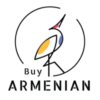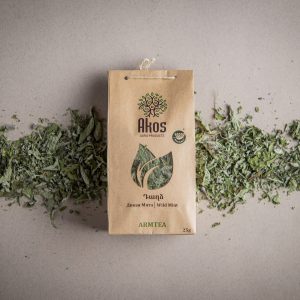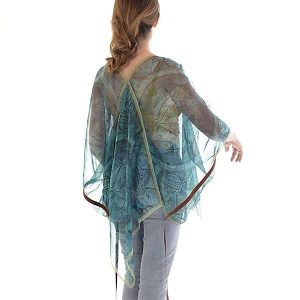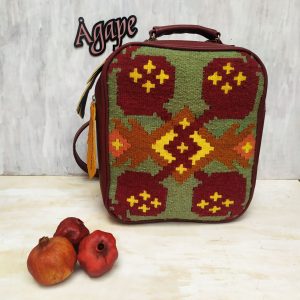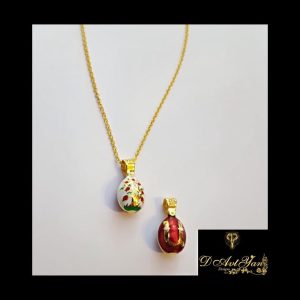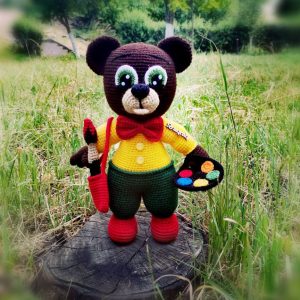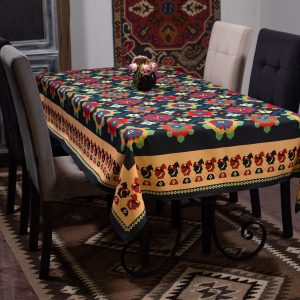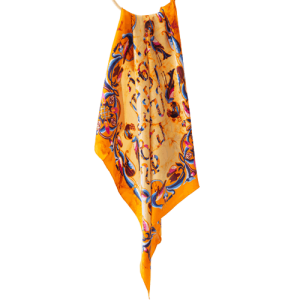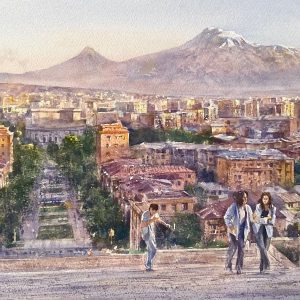-
Dried Wild Mint
Air-dried wild mint leaves hand-picked in the ecologically clean highlands of Biblical Armenia.
100% natural product, does not contain substances and additives. Store in a cool dry place below 20°C and 70% relative humidity: Shelf life: 24 months.
$3.90Dried Wild Mint
$3.90 -
“Sphinx” Scarf-Blouse
HASIS scarf-blouse SPHINX
Free sizeOriginally designed HASIS scarf-blouse made with HASIS chiffon scarves.
HASIS scarf is based on the motive of the treasures of the History Museum of Armenia.
The tray with an image of a sphinx, excavated at Armenian capital Dvin is an aesthetical pearl of the Armenian medieval masters.
The HASIS scarf of emerald hues is a dreamy interpretation of adventures.
$175.00“Sphinx” Scarf-Blouse
$175.00 -
-
” Վզնոց, կաղազարդ:
Երկկողմանի,էմալապատ ոսկեզօծ,արծաթե կաղազարդ. անվանատառ/կենաց ծառ
Առկա են բոլոր տառերը, յուրաքանչյուրը 60$$60.00” Վզնոց, կաղազարդ:
$60.00 -
BRLN | Oversized Heavyweight T-Shirt
100% Premium Carded Cotton
$79.00 -
Artist Bear Benitto
Արվեստագետ արջուկ ‘Բենիտտո’ 30 սմ
Height: 30cm
$69.00$70.00Artist Bear Benitto
$69.00$70.00 -
-
Ornamental Armenian Tablecloth
Material: Gabardine
Colors: Green
Weight (kg): 0.7 kg + 0.1 kg packing
Packing: has a box
Size (cm): 140 x 250
Product code: TL025$185.00$220.00Ornamental Armenian Tablecloth
$185.00$220.00 -
Handmade Soap
Made with the powder grind of the green emerald gem, it has a natural whitening and skin toning effect that lightens your skin in about 5 days. It has a micro-abrasive quality which massages and calms the skin and muscles. As with all our handmade soaps, coconut oil, cocoa butter, and shea butter are its main ingredients, it truly keeps your skin moist and supple in all weathers.
$7.36Handmade Soap
$7.36 -
“Armenian Alphabet” Scarf
The Armenian alphabet was created in 405 AD.
One of the greatest marks of the Armenian identity is the Armenian language. The exact origins of the Armenian language, however, are a little bit obscure. Such is the case with many ancient languages. Serious scholarship starting from the 19th century has placed Armenian among the wider family of Indo-European languages, although it forms its own separate branch within that group. So the language does not have any close relatives today, even Indo-European ones, such as Spanish and Portuguese or Russian and Polish might be considered.Armenian is also unique in its writing system. The Armenians use their own alphabet which was, by tradition, created following the studies and meditations of a monk, Mesrop Mashtots, in the early 5th century AD. Christianity had already been accepted as the national religion for a hundred years in Armenia, but the Bible was not yet available in the native language. The tradition goes that the main motivation to come up with a separate Armenian alphabet was in order to translate the Bible in such a way that would be accessible and suitable for the language and the people.
Mesrop Mashtots – who has since been venerated as a saint, as the patron of teaching and learning for Armenians – accomplished the task in the year 405 AD, thus setting the stage for a rich trove of works of religion and history, science and philosophy, illuminated manuscripts, and published books in the millennium and a half that followed, continuing on today. A major road in the capital of Armenia, Yerevan, is named for Mashtots, and one end of it is the apt location for the Matenadaran, the national repository of manuscripts which also functions as a research institute and museum.
$110.00 -
